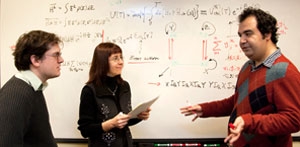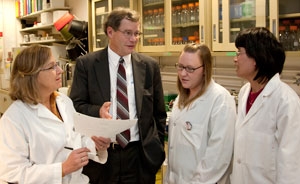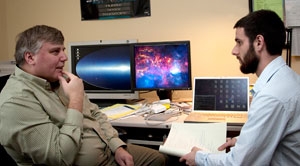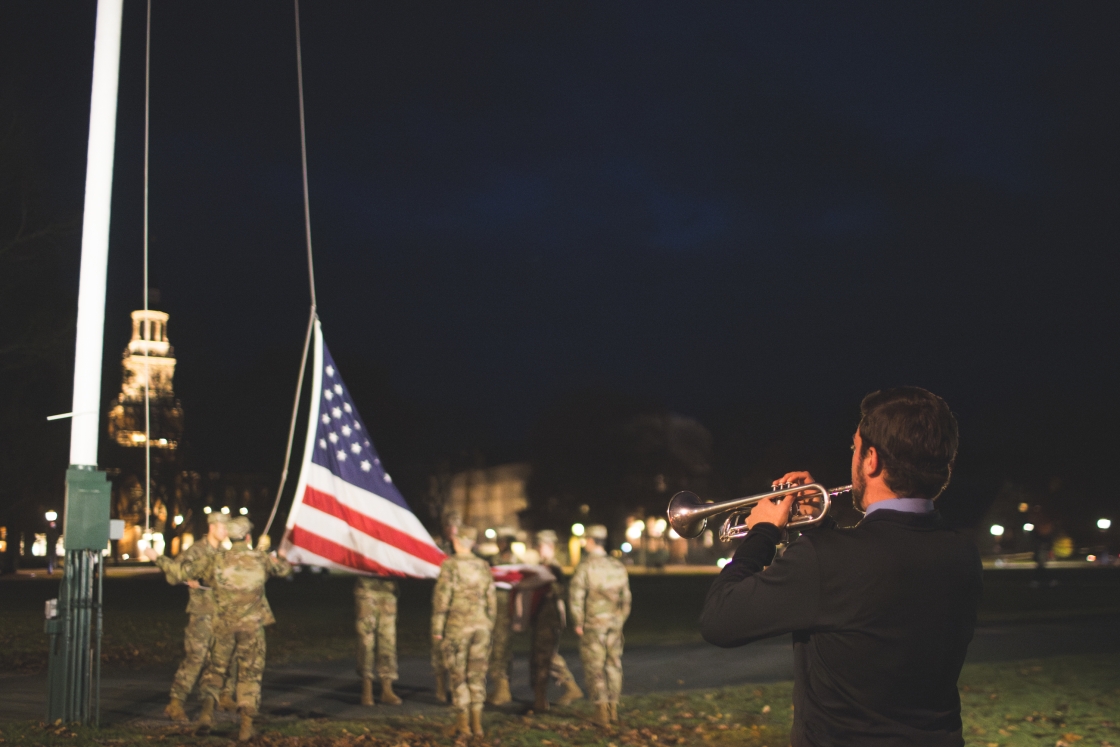President Obama signed the American Recovery and Reinvestment Act (ARRA) on February 17, 2009. Since then, nearly 100 Dartmouth projects have been funded by a variety of federal agencies. As of December 10, Dartmouth has received $38.7 million in ARRA funding.
“The ARRA-funded projects at Dartmouth represent the breadth and quality of research being conducted across all parts of our campus,” says Professor Carol Folt, dean of the Faculty of Arts and Sciences and acting provost.
According to Folt, the ARRA grant process is very competitive and subject to rigorous peer-review. “These projects were selected because they were considered to be of high value to the country. In addition, they contribute to our community by enhancing learning opportunities for our students.”
“The ARRA bill meant that my office really ramped up to help process all the new grant proposals, and we’re also keeping track of what’s being funded and submitting quarterly reports as required by the act,” says Jill Mortali, director of the Office of Sponsored Projects. “The administrative staff at Dartmouth is happy to provide support that assures accountability and compliance and allows researchers to focus on research projects.”
The ARRA-funded projects will be carried out throughout the campus and their effects will be felt across the globe. Dartmouth researchers will be developing a trustworthy wireless network and information system for health-care settings. A global health initiative at Dartmouth will expand into new countries and offer new courses. Dartmouth Medical School researchers will participate in building a national database helping facilitate resource sharing among biomedical scientists. (Visit www.dartmouth.edu/~news for stories about these projects.)
Three faculty members whose research has been supported by the American Recovery and Reinvestment Act in 2009 include:
Lorenza Viola, associate professor of physics$299,000 from the National Science Foundation for “High-Fidelity Quantum Information Processing via Dynamical Quantum Error Control”
Viola’s work concerns quantum physics, the theoretic realm governed by the properties of extremely tiny quantum-mechanical objects such as electrons or atoms. Specifically, Viola and her colleagues want to develop more robust “quantum gates,” which are the elementary building blocks of quantum circuits. Quantum circuits, comprised of quantum bits or qubits, someday will be used to operate quantum computers, super powerful computers that have the potential to perform extremely complex algorithms quickly and efficiently.

Graduate student Winton G. Brown, Professor Lorenza Viola, and Research Associate Kaveh Khodjasteh Lakelayeh. (Photo by Joseph Mehling ’69)
Quantum bits are intrinsically more prone to errors than their classical counterparts, due to decoherence. It is caused by the surrounding environment and tends to irreversibly degrade quantum properties.
“From a practical perspective, devising methods to counteract decoherence, not only when quantum information is memorized but also when complex quantum operations are performed, is the Holy Grail for scalable quantum computation,” says Viola. “From a more theoretical perspective, I believe this project will help uncover the fundamental limits to feedback-free error control methods that stem from basic physical and operational constraints.”
She adds, “While this research requires a solid grasp of quantum mechanics and quantum formalism, it is my hope that undergraduate students will be able to engage in self-contained numerical projects exploring specific qubit settings.”
Bill Green, dean of Dartmouth Medical School and the Elmer R. Pfefferkorn Professor of Microbiology and ImmunologyTwo awards from the National Center for Research Resources: One for $307,533 allows the purchase of a high-end MASCQuant Cell Analyzer in support of Translational Medicine research efforts. A second for $567,951 supports another core facility to create novel mouse strain models of various diseases (DartMouse™). Both are part of Dartmouth Medical School’s Center of Biomedical Research Excellence in Immunology.
Green, the director of the Center for Molecular, Cellular, and Translational Immunological Research at Dartmouth Medical School (DMS), works with mouse models to better understand the immune regulatory mechanisms of various infections. He works in collaboration with colleagues to study, in mice and human systems, influenza, tuberculosis, HIV, and the anti-tumor responses in myeloma and renal cell carcinoma.

Research Assistant Kathy Green, Professor William Green, graduate student Cynthia Stevens, and graduate student Wen Li, MD. (Photo by Joseph Mehling ’69)
The DMS center is one of the Centers of Biomedical Research Excellence, called a COBRE, in the United States and Puerto Rico. As established in 2001, the DMS Immunology COBRE involved the University of New Hampshire in promoting research opportunities for biomedical investigators in New Hampshire, with broad potential for understanding and treating diseases of the immune system, infectious diseases, and cancer.
A year ago, Green and his colleagues, in particular Associate Professor of Pathology Jim Gorham and Assistant Professor of Microbiology and Immunology Jackie Channon-Smith, expanded the COBRE-associated core facilities. As one example, Gorham and Green launched the DartMouse™ core facility. DartMouse™ provides the technical support and know-how that allows researchers to quickly develop mice that specifically express or suppress certain genetic markers.
Using DNA-based technology that utilizes single nucleotide polymorphisms, DartMouse™ allows genetically altered mice to be produced in only four to five generations, or about 1.25 years, rather than the usual ten generations.
“As developed and directed by Jim Gorham, the DartMouse™ resource is used not only by researchers at Dartmouth, but also by researchers at several institutions in the northeast,” says Green. “With this funding, our expanded DartMouse™ facility will enhance efficiency, make its service available to a much larger number of biomedical researchers, and become a regional shared service core.”
Brian Chaboyer, professor of physics and astronomy$279,939 from the National Science Foundation for “New Models of M Dwarf Stars”
Low mass stars, called M dwarf stars, range from 8 to 60 percent of the mass of the Sun, and are the most numerous type of star in the universe. A number of planets have been discovered orbiting low mass stars near the Sun, including some that have rocky surfaces. Chaboyer’s research involves developing better theoretical models of M dwarf stars that help characterize the properties of these stars, their planets, and their suitability for supporting life.

Research Assistant Kathy Green, Professor William Green, graduate student Cynthia Stevens, and graduate student Wen Li, MD. (Photo by Joseph Mehling ’69)
“Current theoretical models are unable to correctly predict the mass-radius relation for M dwarfs,” says Chaboyer. “I’m creating an improved set of stellar models of M dwarf stars, which draws on my previous efforts in modeling low mass stars by critically examining the treatment of convection within the models and also incorporating the effects of magnetic fields.”
Chaboyer routinely involves undergraduate and graduate students in his research. He also participates in Dartmouth’s Women in Science Project, a program to encourage first-year female undergraduates to pursue a career in science, math, or engineering through early exposure to hands-on research experiences.
Click here to view a list of all ARRA-funded Dartmouth projects.
